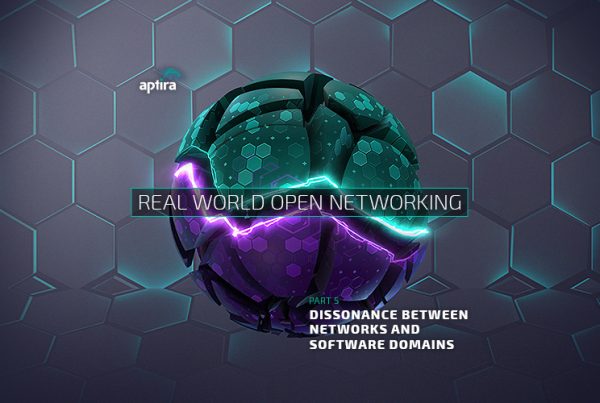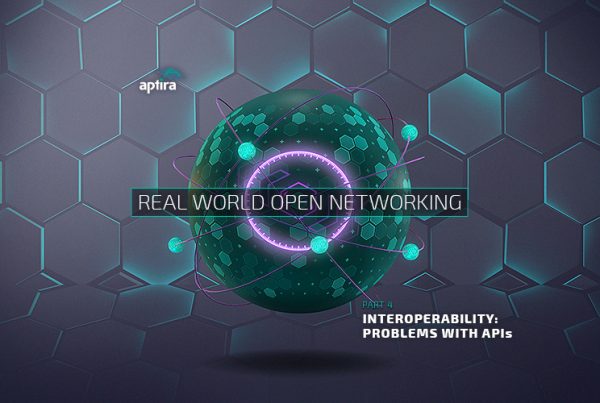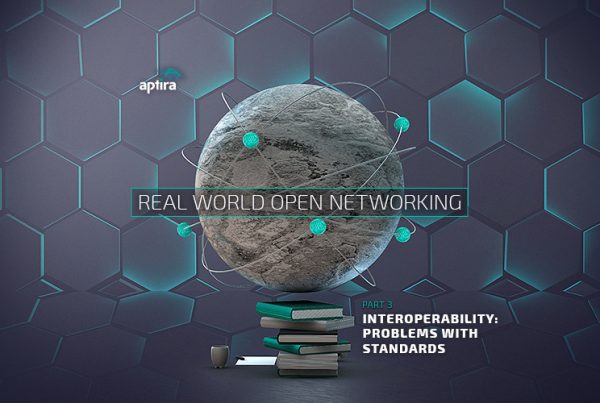
In our last post in this series, we completed our coverage of the third domain of Open Networking, that of Open Network Integration. To wrap up our overall Open Networking series, we begin a set of posts that address the practical reality of delivering Open Network solutions in the current marketplace, and particularly focusing on Interoperability.
Our first topic describes the attributes of an Open Network Solution.
What is an Open Network Solution?
Aptira describes Open Networking as the alignment of technology capabilities, into a holistic practice that designs, builds and operates a solution. Successfully implementing and operating a network needs a lot more than just technology and practices.
A mandatory aspect of Open Network solutions, of course, is that they are actually “open”. But in the industry this term can be somewhat vague and has many meanings depending on who you talk to.
As part of the description and definition of Open Networks in this series of posts, Aptira puts forward our definition of “openness”, and describes how this definition can be practically applied to the solutions that we build.
Openness – Key attributes of an Open Network Solution
Rather than completely “re-invent the wheel”, we’ve adapted and enhanced one of many existing models of Open Networking, that of Aruba Networks. Aptira’s extended model of the key attributes of an Open Network solution consists of five attributes that are essential for solution constructors to leverage existing components in a solution:
- Open Standards – standards (both “de facto” and “de jure”) are prominent in the Open Networking domain. These include the protocols that devices use to interact within a network or externally across other networks;
- Open APIs – the ability to “program your infrastructure as code” based on a set of documented, supported and robust API’s that allow solution constructors to use “composable infrastructure” – to some extent, Open API’s also fall under the standards capability, but we will discuss this in more detail;
- Open (Partner) Ecosystem – enables rapid and frictionless onboarding of new infrastructure into solutions. Aptira strongly believes that an Open Partner Ecosystem must include the principle of “Open Skills” – what we call “teaching our customers to fish” – to ensure that customers do not remain dependent on vendor resources but build skills internally or at least can select alternative sources for required skillsets;
- Open Source – the power and value of open source component availability is key, and we’ve examined this link.
- Open Operations –the ability of an operator rapidly to develop, deploy and operate complex integrated solutions sustainably over time, with high integrity and high flexibility. Since Aptira has added this to the original model, we’ll explain this in more detail below.
In the current marketplace, each of these attributes has practical implementation challenges, but they are all required if a network solution is to be considered truly open.
Open Operations
Aptira added “Open Operations” to the original model, as well as making some other adaptations.
Open Operations is as much related to the operator’s organisational capabilities and skillsets as it is to the technology and partner considerations in the other four pillars, but it is a critical success factor for an operator successfully to capture the promised value of the Open Networking proposition. It extends to the entire solution lifecycle, including the development phase, and is critical in reducing or eliminating the gaps and organisational transitions that occur in the rollout of capability from the development stage of the lifecycle into the production operations stages.
Open Operations is partly, and most importantly, fulfilled by DevOps, but it is more than that. Open Operations is tightly intertwined with the Open Partner Ecosystem to enable third-party participation in operational processes, as required to meet business objectives.
Why do we need Openness?
The holy grail of “openness” is Interoperability, or the ability to interchange components at will.
Whilst this term originally applied to just technical components (network equipment and software), in Open Network solutions it has a broader scope, covering technology, skills and processes amongst other things. Essentially, interoperability means no lock-in, either to a particular vendor or a particular technology choice or product line.
Given that Open Networking solutions are “multi-everything”: multi-vendor, multi-technology, multi-location, multi-product etc, this objective is very important.
We will expand on Interoperability in the next post.
Stay tuned.







